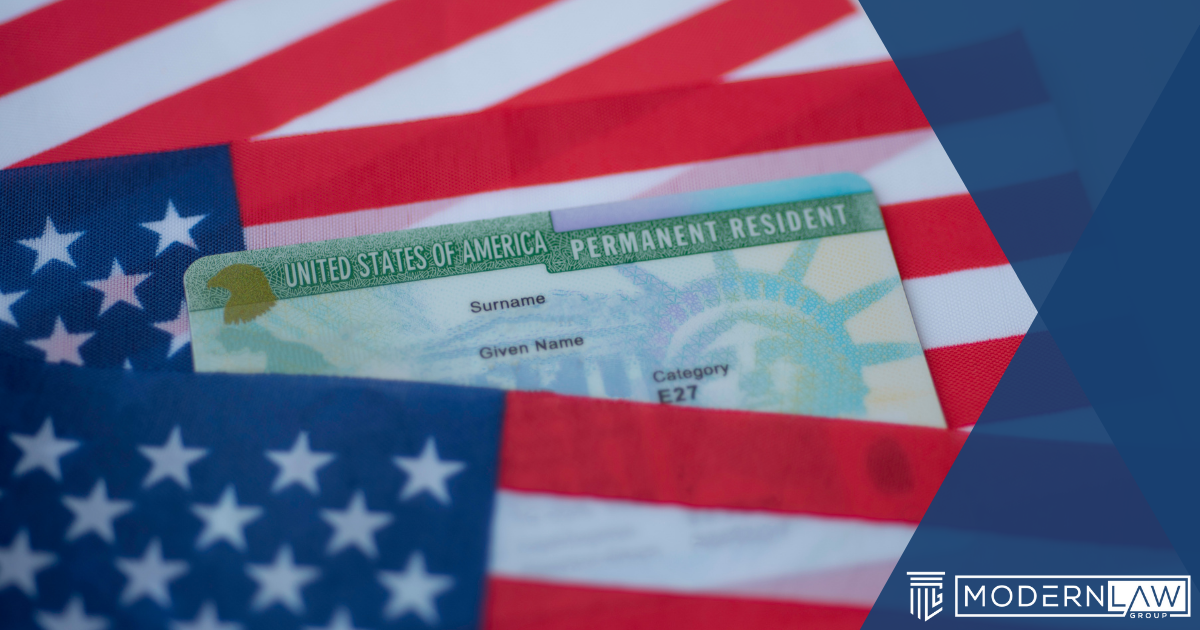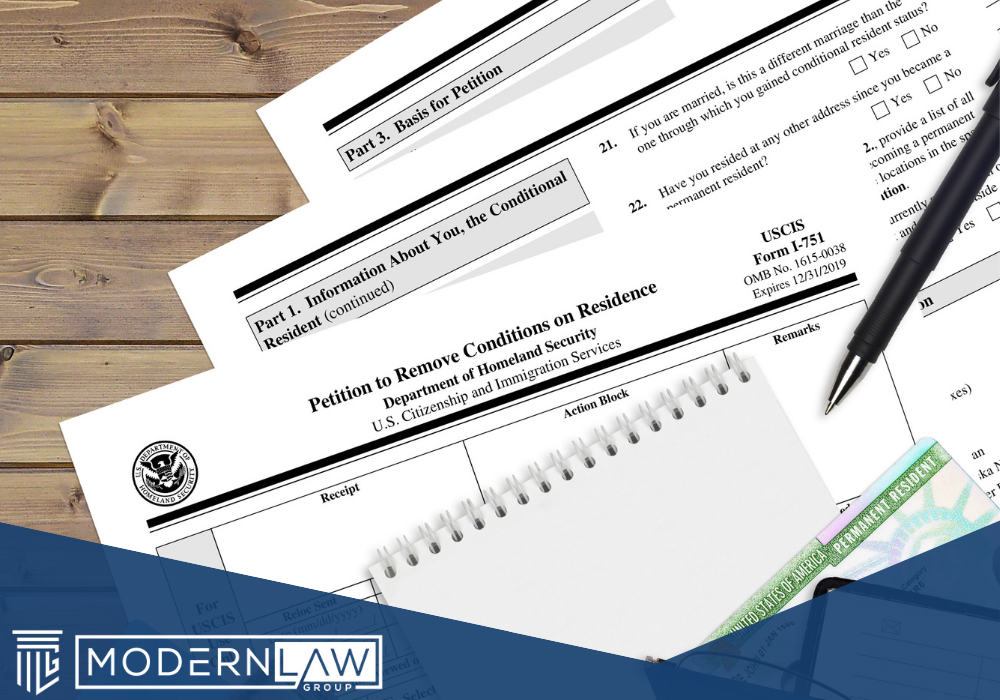Removal of Conditions
Русский перевод
Traducción al Español
When you obtain a green card in the United States through your marriage to a U.S. citizen or a lawful permanent resident, your green card will initially come with conditions attached. You must remove the conditions before your conditional green card expires; otherwise, you are in violation of United States immigration law and you can be removed from the country. This guide explains the removal of conditions from a green card, how to remove conditions and what happens if you fail to do so.
 Removal of Conditions: Everything You Need to Know
Removal of Conditions: Everything You Need to KnowYou must be lawfully married for your spouse to get you a green card. If you’re lawfully married, your spouse can file a petition on your behalf to have your status adjusted to become a lawful permanent resident of the U.S. If you have been married for fewer than two years, your permanent residence status will be conditional.
You are given conditional resident status on the day you are lawfully admitted to the United States on an immigrant visa or adjust your status to permanent residence. After two years of being a lawful permanent resident, you will need to remove the conditions on your green card or you will become unlawful in the United States.
Why is Your Immigration Status Conditional?Your status is conditional because the United States government wants you to prove that you did not get married to evade the immigration laws or to obtain immigration benefits in the United States. To remove these conditions, you must file a Petition to Remove the Conditions on Residence.
 Who Can Apply to Remove Conditions?
Who Can Apply to Remove Conditions?Generally, you may apply to remove your conditions on permanent residence if one of the following situations applies to you:
- You are still married to the same U.S. citizen or permanent resident after two years. Your children may be included in your application if they received their conditional resident status at the same time that you did or within 90 days.
- You are a child and cannot be included in the application of your parents for a valid reason.
- You are a widow or widower of a U.S. citizen, and you entered the marriage in good faith.
- You entered a marriage in good faith, but the marriage ended through divorce or annulment.
- You entered a marriage in good faith, but either you or your child were battered or subjected to extreme hardship by your U.S. citizen or lawful permanent resident spouse.
- The termination of your conditional resident status would cause extreme hardship to you.
Generally, you and your spouse must apply together during the 90 days before the date your conditional resident card would expire to remove conditions on your residence. In other words, you typically need to apply 90 days before the second anniversary of the date your first green card was issued (not your second marriage anniversary).
If you don't apply to remove conditions in time, you could lose your conditional resident status and be put in removal proceedings. The United States government can remove you from the country even if you have established family ties here, you're working, and you are still married to the same spouse. That's why it is so important to apply to remove your conditions in a timely manner.
What if You’re No Longer Married to the Same Person?If you are no longer married to your spouse (the person who originally sponsored you for a green card), or if you have been battered or abused by your spouse, you can request to waive the joint filing requirement. In such cases, you may apply to remove conditions on your permanent residence any time after you become a conditional resident, but before you are removed from the U.S.
Note: Your sponsor does not need to know that you are applying to remove conditions if you are the victim of battery or extreme cruelty. U.S. Citizenship and Immigration Services will not notify them. However, you must file certain paperwork with USCIS so that the officer evaluating your case understands your situation. Your attorney can help you with this paperwork.
What if You File Late?Removal of conditions can be filed after the 90-day deadline if you can prove in writing to the director of the appropriate service center that there was good cause for failing to file the petition on time. The director has the discretion to approve the petition and restore your permanent resident status.
If you fail to file for removal of conditions accurately within the 90 days before your second anniversary (from the date your initial green card was issued) as a conditional resident, the following scenarios could become your reality:
- Your conditional resident status will automatically be terminated and USCIS will begin removal proceedings against you.
- You will receive a notice from USCIS telling you that you have failed to remove conditions.
- You will receive a Notice to Appear at a hearing. At the hearing, you may review and refute the evidence against you. You are responsible for proving that you complied with the requirements.
Your children may be included in your application if they got their conditional resident status at the same time that you received yours, or within 90 days of yours. You must file separate applications for your kids if they received conditional resident status more than 90 days after you did, or if they were granted conditional resident status independently. In this case, your attorney can help you fill out and file separate petitions.
What’s the Point of a Green Card, and Why Do You Need to Remove Your Conditions?As a permanent resident, you should have received a green card. This card will continue to prove that you have a right to live and work in the United States, and that you can do so anywhere you wish without separate authorizations from the United States government.
If you file for removal of conditions on time, the USCIS will extend your conditional resident status until a decision has been made on your application. The USCIS will send you a notice that lets you know your status has been extended, and it's okay if your green card expires during this time; if anyone needs verification that you are a lawful permanent resident during this time, you can simply show them the notice.
Do You Have to Be in the United States to Remove Your Conditions?You can ask USCIS to remove your conditions whether you are in the United States or outside the United States at the time you file. However, you must return to the U.S. with your spouse and your children, as an interview may be required to demonstrate eligibility to remove conditions on your residence, before USCIS will issue a decision.
What Happens During an Interview With USCIS?This interview, if required, will closely mirror the original interview that you and your spouse went through to obtain the marriage-based green card.
You will need to answer questions presented by the assessment agent (officer) that help them determine your eligibility to remove the conditions on your green card. These questions will likely revolve around your relationship and, if necessary, your divorce or divorce proceedings.
Be prepared to answer personal questions to the best of your ability. It doesn't hurt to review your original green card application before you attend this interview.
Please know that responding “I don’t know” or “I’m not comfortable answering” is better than lying. If the officer evaluating your case finds that you are lying, your petition could be denied, and you could be removed from the United States.
If you don't pass the interview, you could face problems renewing your green card. In a situation like this, it may make sense to work with an immigration attorney. However, fraud (lying during your interview) could cost you your green card altogether and possibly bar you from future attempts to enter the United States.
What if You’re in the Process of Ending Your Marriage?If you are still married, but legally separated or you’re in pending divorce or annulment proceedings, and you filed a waiver request, the USCIS will issue a request for evidence (RFE) specifically asking for a copy of the final divorce decree or annulment (if applicable).
If you filed your petition for removal of conditions jointly with your former spouse, the USCIS will issue a request for evidence (RFE) specifically asking for a copy of the final divorce decree or annulment and a statement that you would like to have your joint filing petition treated as a waiver.
Upon receipt of the final divorce decree or annulment within the stated period, your attorney will revise the petition to state that eligibility has been established for a waiver of the joint filing requirement based on the termination of the marriage.
Do You Need to Talk to an Attorney About Removing the Conditions on Your Green Card?If you'd like to speak with an immigration attorney about removing the conditions on your green card, we are here to help. You can call our office to schedule a consultation with a caring, knowledgeable immigration attorney. If it's easier, you can contact us online instead.
 USA Visa Lawyer Modern Law Group, P.C. Home
USA Visa Lawyer Modern Law Group, P.C. Home






 Deron E. Smallcomb If you have a fiancé or spouse in another country, a parent that you'd like to bring to the USA...
Deron E. Smallcomb If you have a fiancé or spouse in another country, a parent that you'd like to bring to the USA...


